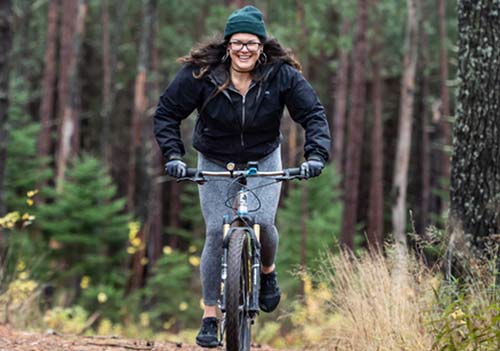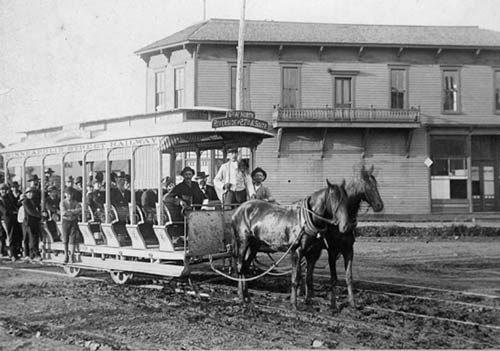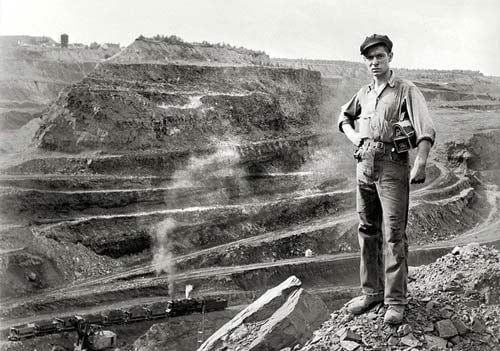North Star Voices
This series takes us on real and imagined odysseys that venture through some of Minnesota’s hidden, forgotten, or otherwise off-pavement landscapes.
Minnesota History Center 3M Auditorium 345 W. Kellogg Blvd.• St. Paul, MN 55102
Directions and Parking
Image: One end of the Hull-Rust-Mahoning pit, largest open pit iron mine in the world, near Hibbing, 1942. Library of Congress.
MineScapes
SAT, OCT 7 • 2–3:30 PM • FREE
The lands of the Mesabi Iron Range in northeastern Minnesota hold both riches and beauty, and over the decades people approached these offerings in different ways. The book Minescapes explores the record written on Minnesota’s mined lands—and the value systems of different generations that have created, touched, and lived among these stunning landscapes.
Join author Pete Kero, an environmental engineer who has consulted with public agencies, mining companies, and communities for nearly three decades on land restoration and reclamation, as he tells stories that highlight the challenges of competing needs on lands that offer opportunities for both mining and recreation.
.jpeg)
Image: from Eric Dregni
Minnesota Marvels
SAT, NOV 4 • 2–3:30 PM • FREE
Only in the Midwest is civic pride measured by the size of a town’s roadside sculpture. Much-loved monuments and larger-than-life replicas add character to their surroundings, intriguing and amusing visitors as they pass through town. Join regional travel expert Eric Dregni on a slightly off-center tour of the bizarre—and the beautiful—across Minnesota, highlighting the one-of-a-kind oddities that cause drivers to turn off the interstate in awe.
After the presentation, author Eric Dregni will be available to sign books.

Image: from Caroline Yang
Endurance and Identity
SAT, DEC 9 • 2–3:30 PM • FREE
It has taken some time for Alexandera Houchin to weave layers of her identity together. First and foremost, Alexandera is an Ojibwe woman. She’s also a farmer, an artist, a mechanic, a cyclist and a person who cares deeply about her community on the Fond Du Lac reservation near Cloquet, Minnesota. She has won numerous cross-country national bike tours including becoming the first woman to win the Tour Divide, which is the country's most grueling, off-pavement, self-supported cycling race that straddles the continental divide.
Join Alexandera as she discusses her hopes to increase representation of Indigenous people in all spaces, including in parks and on trails everywhere. You'll hear her share her story as an unexpected athlete, her drive for shattering barriers and becoming a young biking champion.
This event is made possible by the Emily Tuttle Fund.

Image: from Minnesota Transportation Museum
Minnesota Trolleys
SAT, JAN 13 • 2–3:30 PM • FREE
See the city as it once was and dive into the history of the trolleys that traversed Minnesota’s landscape. Horse cars were the first public transit system in the Twin Cities. Later came the San Francisco-type cable cars. A few were powered by steam, batteries and gas engines. Then when Minnesota's first electric streetcars were introduced in 1888, hundreds of people lined up to try them. As the primary mode of urban transportation, they shaped the development in cities all over the state and the landscape that we know today. Some connected cities with each other and even crossed state lines into Wisconsin and North Dakota. Most disappeared by the 1930s, but the Twin Cities system lasted until 1954, and is now Metro Transit. During this program view photographs and objects from our collection that highlight this hidden history.
Speaker: Aaron Isaacs has volunteered with the Minnesota Streetcar Museum for 50 years as a motorman, historian and editor. He is the co-author of Twin Cities by Trolley, The Streetcar Era in Minneapolis-St. Paul (University of Minnesota Press 2007), and author of Twin Ports by Trolley, The Streetcar Era in Duluth-Superior (University of Minnesota Press 2014) and Twin Cities Trolleys in Color (Morning Sun Books 2017). He's the editor of the Museum's quarterly Twin City Lines history magazine. Aaron's career was as a planner and manager for Metro Transit. He lives in Minneapolis.

